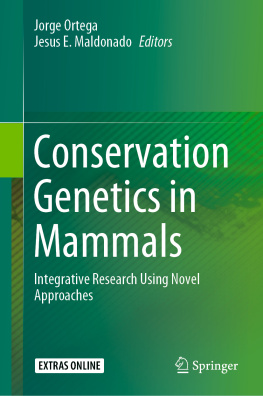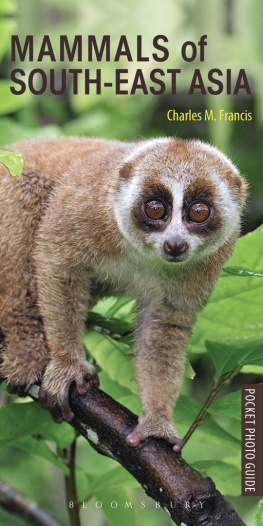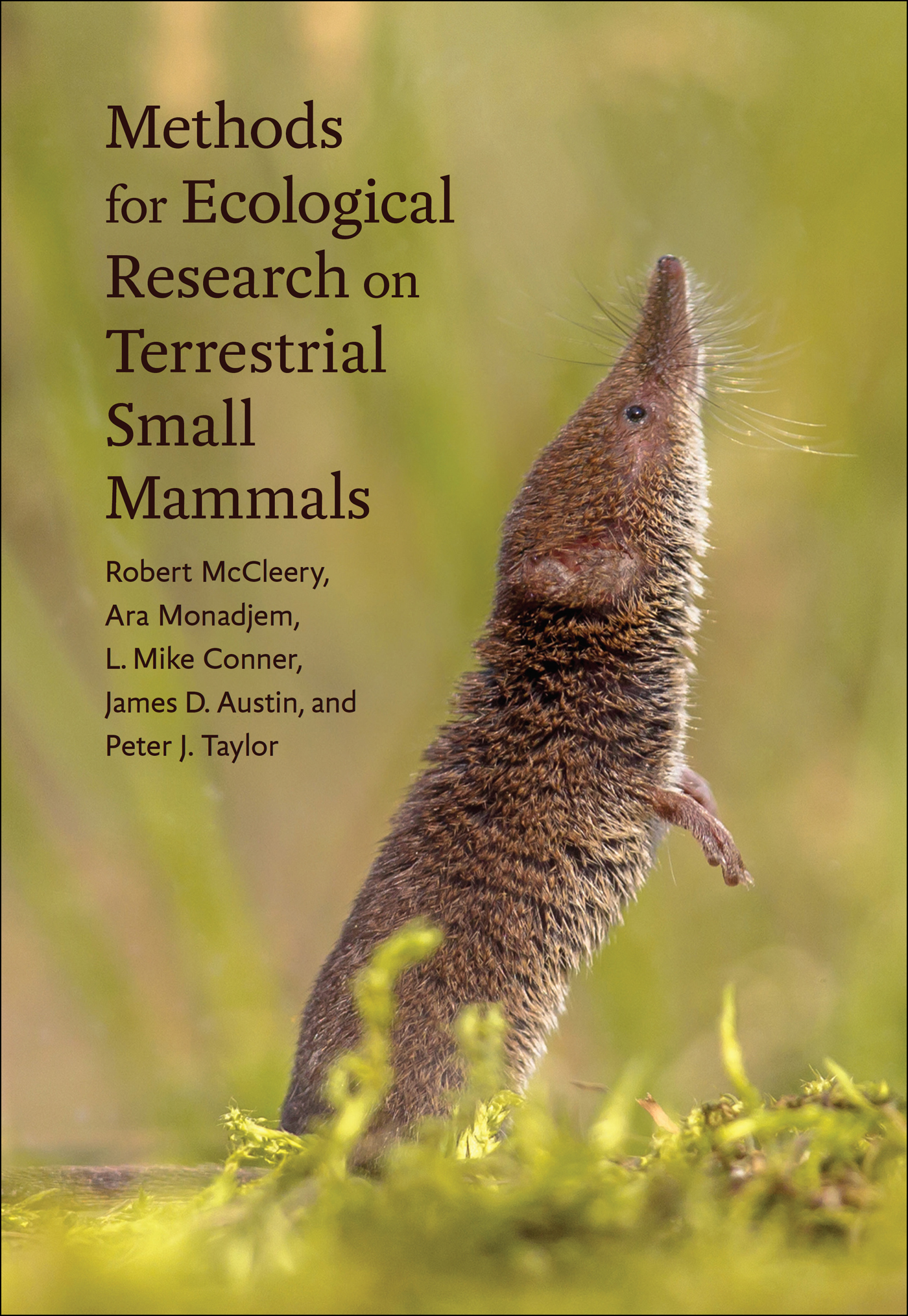Contents
Guide
Methods for Ecological Research on Terrestrial Small Mammals
Methods for Ecological Research on Terrestrial Small Mammals
Robert McCleery, Ara Monadjem, L. Mike Conner, James D. Austin, and Peter J. Taylor

Johns Hopkins University Press
Baltimore
2021 Johns Hopkins University Press
All rights reserved. Published 2021
Printed in the United States of America on acid-free paper
9 8 7 6 5 4 3 2 1
Johns Hopkins University Press
2715 North Charles Street
Baltimore, Maryland 21218-4363
www.press.jhu.edu
Library of Congress Cataloging-in-Publication Data
Names: McCleery, Robert A., 1972 author.
Title: Methods for ecological research on terrestrial small mammals / Robert McCleery, Ara Monadjem, L. Mike Conner, James D. Austin, and Peter J. Taylor.
Description: Baltimore : Johns Hopkins University Press, 2021. | Includes bibliographical references and index.
Identifiers: LCCN 2020057149 | ISBN 9781421442112 (hardcover) | ISBN 9781421442129 (ebook)
Subjects: LCSH: MammalsEcology. | MammalsResearchMethodology.
Classification: LCC QL739.8 .M33 2021 | DDC 599dc23
LC record available at https://lccn.loc.gov/2020057149
A catalog record for this book is available from the British Library.
Special discounts are available for bulk purchases of this book. For more information, please contact Special Sales at specialsales@jh.edu.
To our wives
Acknowledgments
This book was motivated by the beauty of small mammals and the complexity of their ecological interactions, which we have toiled to understand and explicate. They have given us an unprecedented window into the natural world, challenged our thinking, aided our careers, and filled our working hours with joy; for this we are endlessly grateful. We thank our mentorsR. Honeycutt, N. Silvy, B. Leopold, M. R. Perrin, G. Bronner, J. U. M. Jarvis, I. L. Rautenbach, and the late J. A. J. Meesterfor helping to spark our passion for small mammals and for teaching us many of the ideas found in this book. In turn, we are inspired by the hard work, creativity, and enthusiasm our students and technicians have demonstrated while working with small mammals. We thank our collaborators for sharing their knowledge and ideas and for making field work so enjoyable. We have also received considerable support from our institutions and supervisors, who have giving us the freedom to pursue our research interests. Finally, we thank our wives and families for tolerating dead animals in their freezers, misplaced bait bags in the laundry, and our endless weeks in the field.
Methods for Ecological Research on Terrestrial Small Mammals
1. Introduction
The term small mammal as generally used describes roughly three-quarters of the species in the class Mammalia. The orders Rodentia (rodents) and Chiroptera (bats), which are composed almost entirely of small mammals, alone account for >60% of extant mammals. However, because the methodologies and approaches used to study bats and nonvolant mammals are quite different, and because there are authoritative works detailing the study of bats (e.g., Kunz and Parson 2009), our focus with this text is to detail ecological methods for the study of terrestrial small mammals. Accordingly, we use small mammal to mean nonvolant mammals with body mass <3 kg. More specifically, the methodologies presented in this text are highly applicable to the study of species from the orders Rodentia, Afrosoricida (tenrecs, golden moles, otter-shrews), Eulipotyphla (shrews and moles), Lagomorpha (rabbits, hares, and pikas), and Didelphimorphia (opossums), but we specifically exclude the Carnivora and Primates. While there are many primates and carnivores that are <3 kg, they are ecologically distinct from other terrestrial small mammals, and many of the methods used to study smaller primates and carnivores are specialized as well as similar to the approaches used on larger members of their family.
Unlike their larger relatives, small mammals do not often capture the publics imagination, despite their equally critical role in the proper ecological functioning of most terrestrial systems. Ecologically, small mammals are important as herbivores, seed predators and dispersers, pollinators, nutrient cyclers, soil aerators, ecosystem engineers, and prey for numerous other species (Lacher et al. 2016). Small mammals also are significant in the well-being and livelihoods of human populations. Small mammals are hosts to pathogens that can be transferred to humans and cause disease. These diseases have reshaped the course of human history (e.g., plague) and to this day endanger our public health. Some small mammals are also notorious crop pests that can damage most types of crops (e.g., cereals, fruits, vegetables), causing billions of dollars of damage and loss for millions of people across the world.
Historically, there have been several resources to help guide researchers and managers interested in conducting ecological research on small mammals. Some are broad texts that cover study design, field methods, and analysis of wildlife research. These venerable texts include Charlie Krebss Ecological Methodology (2014), various editions of The Wildlife Techniques Manual (Braun 2005, Silvy 2020), and Bill Sutherlands Ecological Census Techniques (2006). Such general texts are invaluable resources that we refer to regularly in this book, but their breadth precludes detailed description of many of the methodologies that are specific to the study of small mammals. There are also several textsfor example, Field Methods for Rodent Studies in Asia and the Indo-Pacific, by Ken Aplin and his colleagues (2003), and Manual for Analysis of Rodent Populations, written by David Davis in 1956that covered some of the traditional methods used to conduct ecological field research on small mammals. These important works are not, however, up-to-date with the latest passive, molecular, and statistical approaches and can be limited to specific taxa (e.g., rodents) and regions of the world. Still, there is a treasure trove of manuscripts and book chapters detailing innovative ways to study small mammals that have yet to be compiled and synthesized.
Accordingly, there was a real need for a comprehensive, up-to-date guide on how to study the ecology of small mammals that covered the latest techniques, as well as the tried and tested methods for conducting rigorous scientific inquiry on small mammals. We crafted this book to fill that void and provide researchers, students, and managers with the information that they will need to conduct innovative, state-of-the-art research on small mammals. We highlight approaches that are currently being used for small mammal ecological research while introducing emerging technologies that might become commonplace in the coming decade. We also made a concerted effort to include research and examples from different parts of the world. We were keenly aware that the realities, challenges, and methodologies used to research small mammals in, say, deserts are quite different from those facing researchers in tropical forests. In an effort to capture the diversity of approaches used to conduct ecological research on small mammals, we incorporate research methods from different continents and ecoregions (e.g., rainforests, temperate forests, savannas, wetlands, and arid systems).








